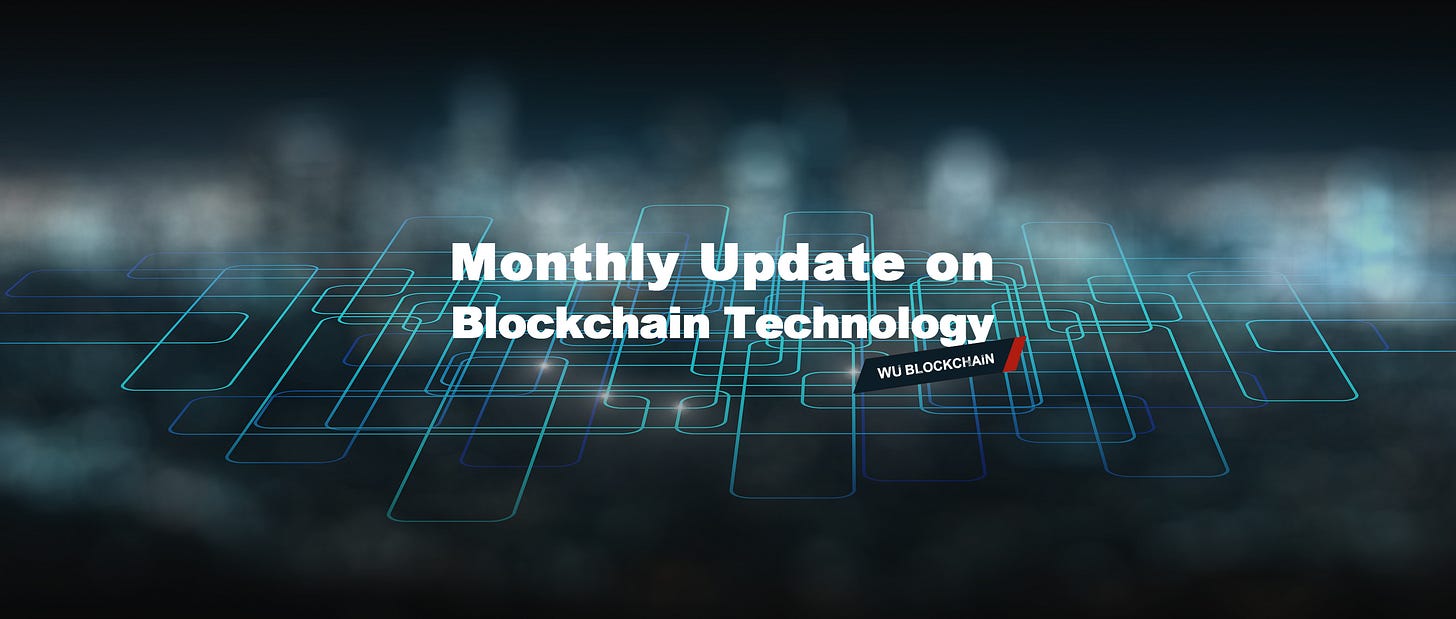October Blockchain Technology Update: BIP-444 Controversy, Fusaka Testnet Completed, and BNB Chain Scalable DB Launch
Written by | GaryMa, Wu Blockchain
The WuBlockchain summarizes key developments in the blockchain technology space for October:
Bitcoin
● Bitcoin Core 30.0 Released: Key updates include a new bitcoin command-line tool, support for Windows external signing recovery, activation of the IPC mining interface (supporting Stratum v2), and a higher default limit for OP_RETURN data capacity. This version also adjusts the default minimum relay fee (0.1 sat/vB) and minimum mempool package fee settings, while removing support for legacy BDB wallets, keeping only descriptor wallets.
● Four New Security Advisories: The Bitcoin Core team issued four new security advisories addressing CPU DoS, rare crashes on 32-bit systems, and disk exhaustion vulnerabilities — all fixed in v30.0. Maintainer Michael Ford described these as low-severity issues and announced that maintenance for the v27 branch has ended, urging node operators to upgrade.
● BIP-444 Sparks Heated Debate: The community is divided over BIP-444, which proposes a one-year temporary soft fork to restrict OP_RETURN data to 83 bytes and embedded data in other scripts to 34 bytes. This is meant to counter potential spam and illicit content following Bitcoin Core v30’s removal of data limits.Supporters argue unrestricted data uploads could expose node operators to legal risks and undermine decentralization. Critics say it introduces protocol-level content censorship, contradicts Bitcoin’s permissionless ethos, and lacks a clear definition of “illegal content.”
Ethereum
● Fusaka Upgrade Progress:Testnet upgrades have been successfully completed, with the mainnet upgrade tentatively scheduled for December 3. Upon activation, the mainnet gas limit will increase to 60M (from 45M).
● Glamsterdam Upgrade Preparation: EIP-7732/ePBS (consensus layer) and EIP-7928/Block-Level Access Lists (execution layer) have been confirmed as core proposals. Development is shifting focus to this upgrade, with deadlines for non-core EIPs set one week after the Fusaka mainnet date.
● Ethereum Foundation Expands Privacy Efforts:The Foundation announced a new Privacy Cluster led by Igor Barinov, consisting of 47 researchers and engineers focusing on full-stack privacy tech. The cluster unifies the work of the PSE team (since 2018), creators of Semaphore, MACI, zkEmail, and TLSNotary — over 50 open-source privacy projects.Current priorities include: low-cost private transactions and verification (Private Reads/Writes and Private Proving), selective disclosure identity tools (zkID), institutional privacy initiatives (IPTF), and SDKs for privacy wallets such as Kohaku.
● EIP-7791 Proposal Discussion:Developers discussed introducing a new GAS2ETH opcode to allow users calling smart contracts to pay a small additional fee directly to developers, on top of gas fees. This could establish a micro-revenue model for creators and public goods projects, with income scaling by user base.
Ethereum L2s
● Optimism Superchain Upgrade 16a:A maintenance upgrade scheduled for mainnet to replace U16 with a more secure and flexible system.
● Polygon PoS “Rio” Hard Fork:Now live on mainnet, introducing a new block production model, near-instant finality without reorgs, and witness-driven stateless validation. Targeting ~5,000 TPS and lighter nodes — optimized for payments.
● ZKSync “Atlas” Upgrade:Launches a new high-performance sequencer and Airbender zk-proof system, claiming 25k–30k TPS and sub-second finality.
Solana
● SIMD-0266 “Efficient Token Program”:Solana ecosystem developer Anza proposed replacing the current SPL Token program with a performance-optimized version called p-token.p-tokens reduce compute unit (CU) usage by up to 98%, freeing ~12% of block space for other transactions and improving throughput. It is a zero-copy, heapless, backward-compatible implementation — clients can swap it in without code changes.
BNB Chain
● Scalable DB Launch:Marks the start of horizontally scalable mainnet data architecture, combining multi-database storage, state sharding, and shared caching to handle over 3.4 TB of chain state.Benchmarks show 70–75% write performance improvement, ~12% read performance boost, and significant reductions in node sync and validator latency.
Hyperliquid
● HIP-3 Network Upgrade Activated:Developers can now permissionlessly launch perpetual contract markets by staking 500,000 HYPE tokens on HyperCore.Integrated with HyperEVM, it supports smart contracts, governance, validator slashing, and position caps for security.
Avalanche
● Granite Upgrade (Fuji Testnet) Scheduled:Activates October 29, introducing P-Chain epoched views (improving ICM cross-chain messaging), secp256r1 support (for biometric/hardware integration), and dynamic minimum block time for faster confirmations.
Security
● Socket Report: North Korean “Contagious Interview” Campaign:Cybersecurity firm Socket reports that North Korean hackers uploaded over 300 malicious npm packages disguised as recruitment code or Web3 tools. These packages steal credentials, browser data, and crypto wallet keys upon installation.Targets: blockchain and crypto developers. Some malicious packages surpassed 50,000 downloads.
● Security Alliance (SEAL) Launches TLS Attestations:A new encrypted verification tool to combat phishing and confirm malicious website content. Users can report suspected phishing sites, and SEAL verifies signatures and evidence.Supported by a16z Crypto, the Ethereum Foundation, and Paradigm, SEAL says the tool lets white-hat researchers “see what victims see,” improving anti-scam transparency.
Other
● Berachain Preconfirmation System Proposal: A new mechanism to improve transaction confirmation speed by over 10×, enhancing fairness, performance, and low latency.Built on Berachain’s Beacon-Kit (consensus) and Bera-Reth (execution) clients, requiring no extra validator components — ideal for high-frequency and reorg-sensitive apps.
● SynFutures Major Protocol Upgrade:Aiming for 5ms block times and next-gen on-chain derivatives infrastructure combining CEX-like performance with DeFi openness. Focus areas include millisecond execution, institutional liquidity, and transparent on-chain settlement.Internal testing begins in October alongside a brand and community relaunch.
● Brevis Launches Pico Prism zkVM:A multi-GPU zero-knowledge virtual machine enabling real-time Ethereum proofs on consumer hardware. Tests show 99.6% of 45M gas blocks proved within 12s (average 6.9s), a 40.9%→98.9% coverage jump and 10.3s→6.04s speedup vs. SP1 Hypercube, with GPU cost halved to $128K.Brevis targets real-time proving with just 16 RTX 5090 GPUs.
● Kadena Ceases Operations:Layer-1 project Kadena announced it could no longer operate due to market conditions and has halted all business and blockchain maintenance.Kadena emphasized its decentralized PoW network will continue functioning with miner support, with ~566 million KDA mining rewards distributed until 2139. A small team will handle transitions and release updated binaries for node continuity.
Follow us
Twitter: https://twitter.com/WuBlockchain
Telegram: https://t.me/wublockchainenglish


